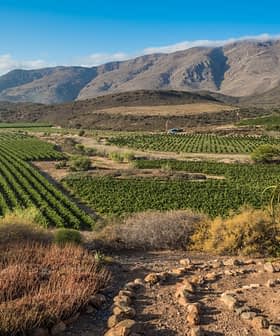
Winter storms over the holiday season no longer just make us think of flight cancellations and school closings, but also how climate change bears its face in the increase of serious weather and extreme temperature shifts. This is particularly relevant for agriculture, and has changed the way farmers and ranchers in California, as well as the rest of the country, consider how, when, and where they plant their crops.
The most immediate issue for the olive affected by climate change is rainfall. For California, 2013 was the driest year on record since such numbers have been kept, dating back over 150 years. Less rainfall means stunted olive oil production, with few options for farmers when water prices remain high. This pertains to the bulk of American olive oil production, considering that 90 percent of olives grown domestically come from California.
This lack of rain, and the low harvest numbers that may follow stand in stark contrast to 2012, when widespread drought in Europe sent EU olive oil prices soaring, situating California growers with the chance to grab market share in the heart of the Old World.
The Pacific Institute, an organization that conducts research on sustainable alternatives reported that regulated deficit irrigation, in which irrigation is applied during the most drought-sensitive growth stages of a crop, can significantly reduce water use, might be appropriate for use on olive ranches.
Extremes in temperature, which are also growing in frequency, pose grave risks to a olives as well. In 1998, severe cold temperatures caused significant losses for olives in California, and was especially damaging to citrus fields. Olive trees can normally handle brief cold snaps, but sub- freezing temperatures that last longer than a few hours will damage new, small branches, and may prevent fruit production.
The variability in chilling hours, which garner less attention than frost, are equally important to overall olive vitality. Dennis Baldocchi, a professor in the Department of Environmental Science, Policy, and Management at UC Berkeley has published research indicating that accumulated winter chill hours are declining in the growing regions of California, which affects a range of crops from olives to plums to almonds. A substantial amount of chilling hours (between 32 and 45 degrees Fahrenheit) are necessary for olive flower bud development, which facilitate the plant’s movement out of its vegetative state so fruit can be produced.
Climate does not only affect olive trees directly, but changing temperatures also influences insect diversity and frequency for a given area. A recent article in the University of California’s California Agriculture journal reported that rising carbon dioxide levels will exacerbate most insect and pest problems in the State. This is particularly relevant to the olive fly, olive’s most notorious and costly pest, but studies show that this effect may actually operate in a counter-intuitive way.
The olive fly, which was first detected in the US in 1998 outside Los Angeles, cannot transition from egg to adult under high summer temperatures, and existing adults have reduced flying ability during such heat. In fact, some ranchers in California’s Sonoma and Napa counties believe that last summer’s mild temperatures are the reason for increased olive fly infestations in the region, without stretches of summer heat to reduce the fly population. Together, these effects create a complex web of our changing climate and olive oil production, whose future will require further scientific research, careful monitoring, and in the end, some rain.








